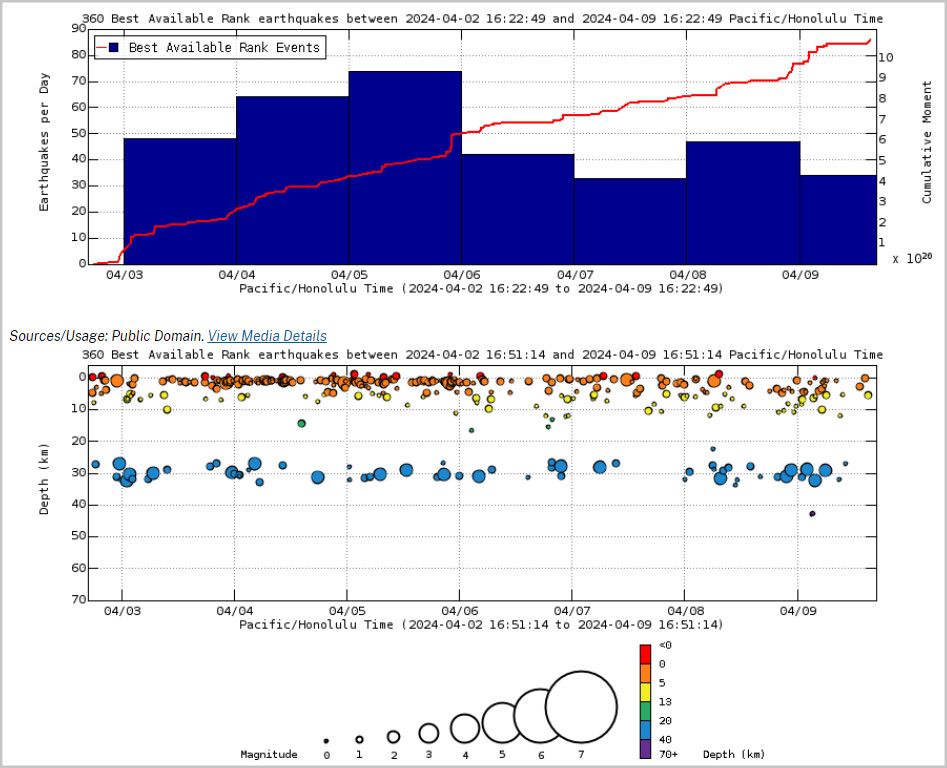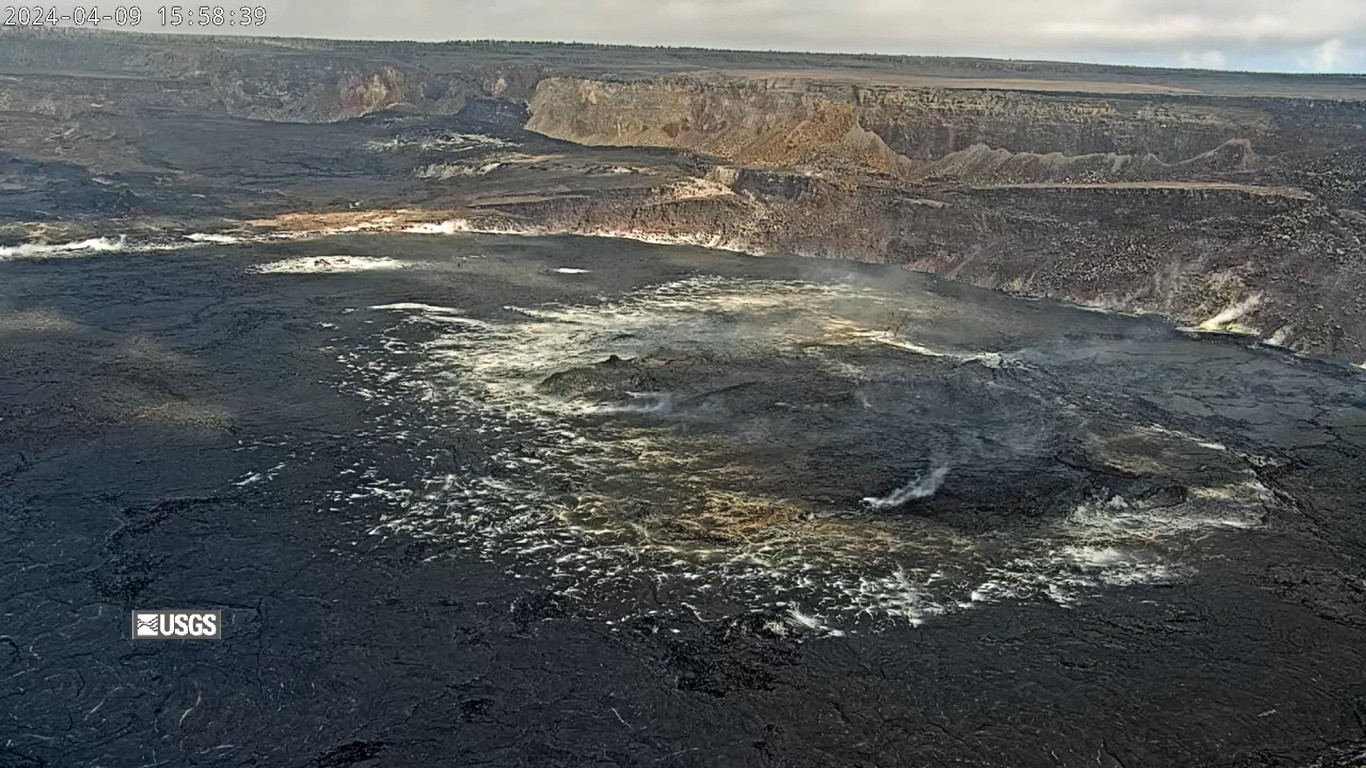(BIVN) – Kīlauea volcano on the Island of Hawaiʻi is not erupting and the USGS Alert Level remains at ADVISORY.
Scientists with the USGS Hawaiian Volcano Observatory this week reported that low-level seismicity continues beneath the summit and Southwest Rift Zone, while rates of ground deformation remain low.
It was noted that the rate of earthquakes at the Kīlauea summit were slightly elevated, but but still well below what was detected during the January magma intrusion that migrated to the southwest of the caldera.

USGS graph shows earthquake rates and depths. From USGS HVO: “Above Top: Number of earthquakes per day during the past week (blue bars). The red line is the cumulative moment (energy) release. Bottom: Depth of earthquakes during the past week in the area shown on the map above. Depth is reported relative to sea level, which is equal to a depth of zero on the above plot. On both figures, circle-size represents magnitude, and color indicates depth. An interactive earthquake plot can be found on the HVO Earthquakes page.”
From this week’s USGS HVO update, published on Tuesday, April 9th:
Summit Observations: Low levels of seismicity continue beneath Kīlauea’s summit. During the past week, the rate of earthquakes here were slightly elevated, but daily earthquake counts remain well below those detected during the January–February intrusion or prior to recent summit eruptions. At this time, earthquake depths beneath the summit are primarily 0.3–1.6 miles (0.5–2.5 kilometers) below the surface, and magnitudes are typically below M2.0.
Ground deformation continues at low rates across Kīlauea, with tiltmeters near Uēkahuna and Sand Hill—respectively northwest and southwest of the summit caldera—showing only small changes over the past week.
Sulfur dioxide (SO2) gas emissions have remained at low, noneruptive levels since October 2023. An SO2 emission rate of approximately 60 tonnes per day was recorded on March 27.
Rift Zone Observations: Low levels of seismicity continue beneath Kīlauea’s Southwest Rift Zone. During the past week, daily earthquake counts remained well below those detected during the January–February intrusion. No unusual activity has been noted along the East Rift Zone. We continue to closely monitor both rift zones.
Measurements from continuous gas monitoring stations downwind of Puʻuʻōʻō in the middle East Rift Zone—the site of 1983–2018 eruptive activity—remain below detection limits for SO2, indicating that SO2 emissions Puʻuʻōʻō are negligible.
Hazard Analysis: Levels of volcanic gases (sulfur dioxide and carbon dioxide) can remain locally hazardous even when Kīlauea is not erupting. Local concentrations of sulfur dioxide (SO2) and/or hydrogen sulfide (H2S) may persist in downwind areas, and residents may notice odors of these gases occasionally. Significant hazards also remain around Halemaʻumaʻu from crater wall instability, ground cracking, and rockfalls that can be enhanced by earthquakes within the area closed to the public.


by Big Island Video News4:58 pm
on at
STORY SUMMARY
HAWAIʻI VOLCANOES NATIONAL PARK - For another week, earthquake rates at the summit of Kīlauea were slightly elevated, but still well below what was detected during the January magma intrusion.